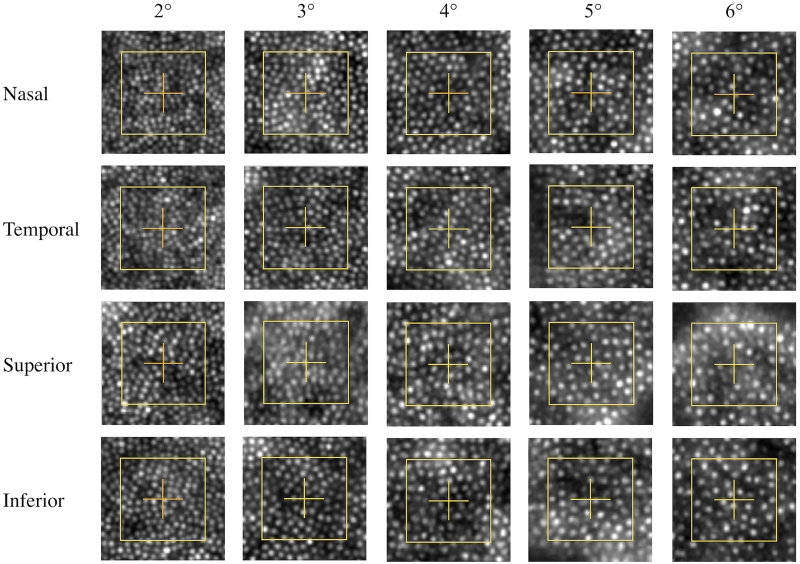Publication assesses cone cell density in a large number of healthy retinas
Assessing cone cell density is of key importance for research in inherited retinal diseases that affect cone photoreceptor cells. A new milestone has been reached with an article recently published in the Plos One journal, which provides statistics of the spatial distribution of cone cells in a population of 109 healthy subjects. The measurements were based on images acquired using the rtx1 Adaptive Optics Retinal Camera.

What makes this article particularly interesting is the clinical confirmation that it provides with respect to several facts:
- rtx1 images enabled mesuring cone density in fair agreement with previously published histological data in a perifoveal region comprised between 2 and 5 degrees of retinal eccentricity.
- The measured cone density was on average higher along the horizontal meridian than along the vertical meridian
- The interindividual variability of cone density can be strongly reduced when cone density is computed using visual units (nr of cells per degree²) instead of anatomical units (nr of cells per mm²). Visual units also present the advantage of being more closely related with functional vision.
Article reference: Legras, R. et al. Distribution of Cone Density, Spacing and Arrangement in Adult Healthy Retinas with Adaptive Optics Flood Illumination. PLOS ONE 13, e0191141 (2018)